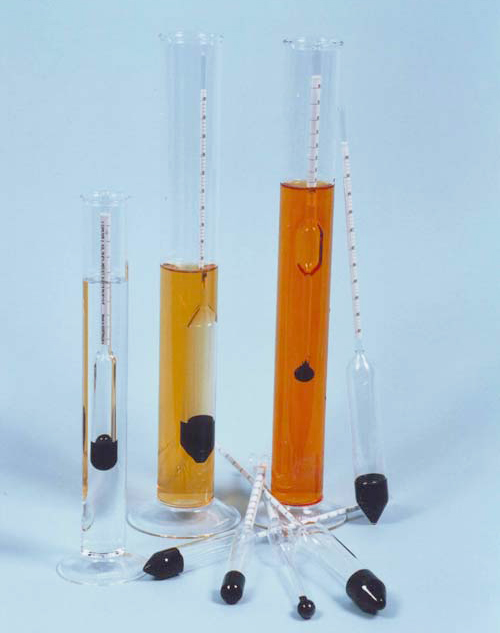The Difference Between Density Hydrometers and Specific Gravity Hydrometers

What is the difference between SG Hydrometers and Density Hydrometers?
All hydrometers work on the principle of displacement, however there are two common types to choose from and the below descriptions can help choose which type may be suitable for your application.
Density Hydrometers
Density hydrometers read mass by unit of volume at a given temperature. For example, a reading of 1200 on an Australian Standard density hydrometer indicates that the liquid has a mass of 1200kg per cubic meters at 20ºC.
Another way would be a block of water measuring 1m x 1m x 1m would weigh 1200kg if the water was at 20ºC.
International standard hydrometers read in g/ml, which in the example above would change to 1cm x 1cm x 1cm with a mass of 1.200 g/ml.
View our range: https://www.labdirect.com.au/glassware/hydrometers/density-hydrometers/
Specific Gravity Hydrometers
Specific Gravity, or SG hydrometers are generally the most common type of hydrometers used.
A simple definition of SG is that the reading taken on an SG hydrometer is a ratio of that liquid compared to pure water. For example, a reading of 1.200 SG indicates that the liquid is 1.2 times more dense than pure water.
Specific Gravity is a common unit mainly because much of the early research on density was done with water. Being the most common liquid available, it was used as the base line for other liquids. The difference can be the third decimal place - it makes a bigger difference on the more accurate hydrometers.
View our range: https://www.labdirect.com.au/glassware/hydrometers/specific-gravity-hydrometers/
NOTE: Hydrometers are usually calibrated to be read at one temperature. Density is often 20ºC and SG is often 15.6ºC.
Recent Posts
-
PTFE Bottles - PTFE Labware
PTFE Bottles - PTFE Labware Isostatically molded in pure PTFE Machined base for good heat …2nd Apr 2025 -
Glass Beakers - SIMAX® Beakers Made from Heatproof Borosilicate Glass
SIMAX® Heatproof Borosilicate Glass Beakers available at LabDirect.com.au Glass beakers are ess …6th Feb 2025 -
Viscosity Meters - Digital Viscometers by Anton Paar
Do you need an easy-to-use viscometer that provides convenient operation for the most reli …22nd Oct 2024
